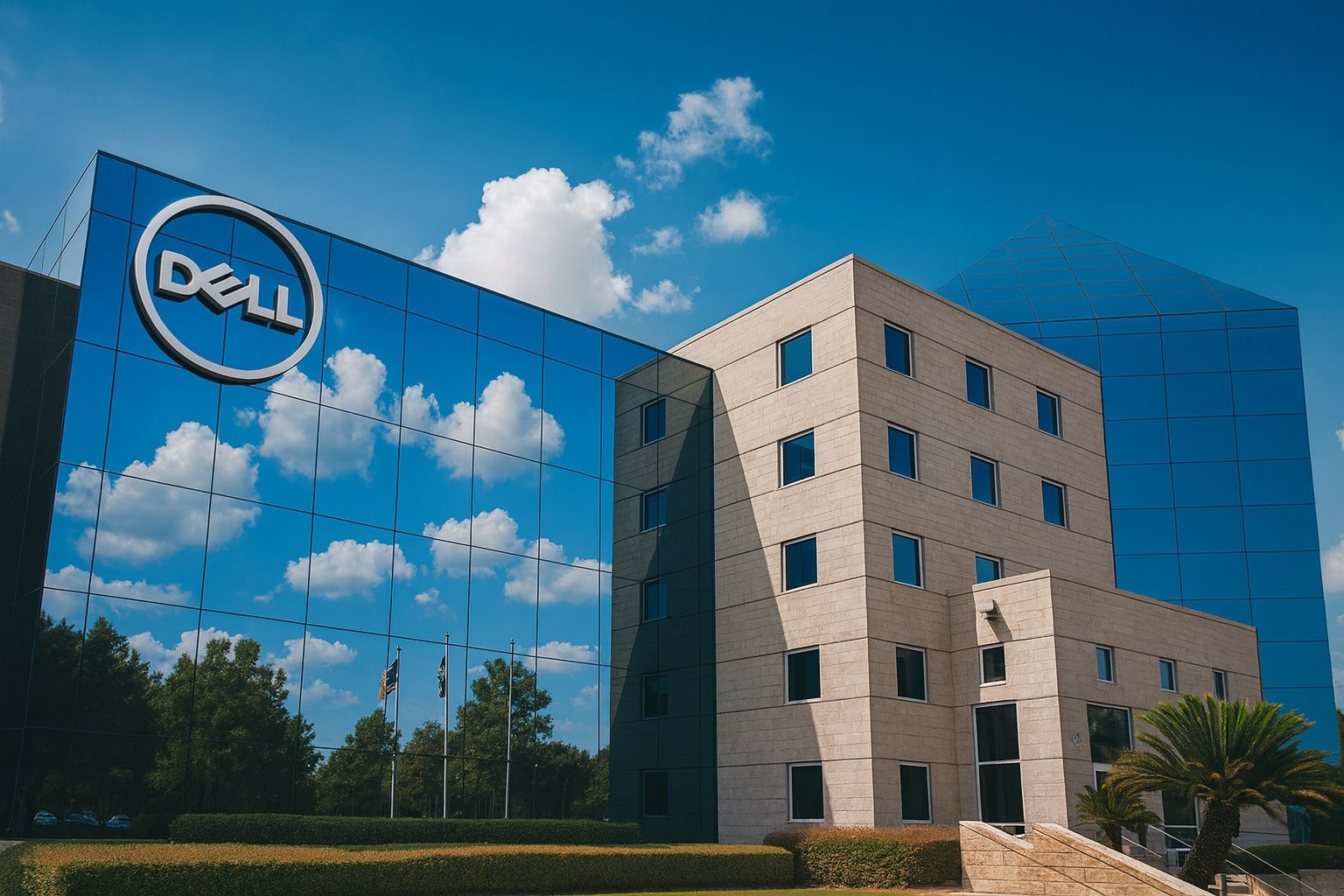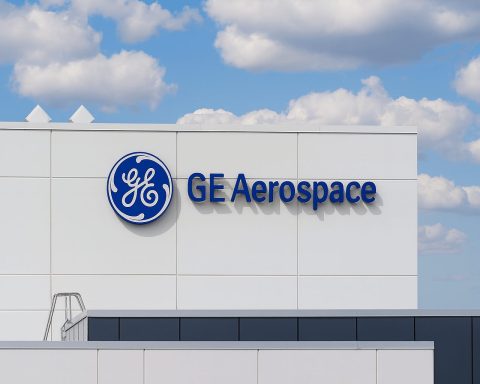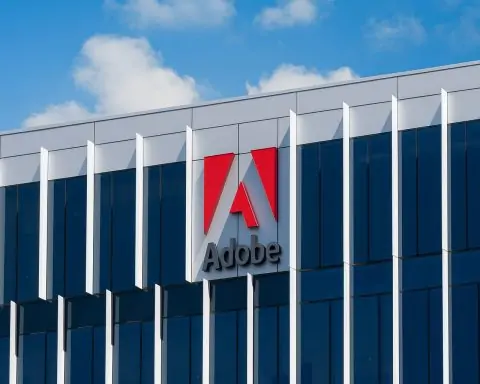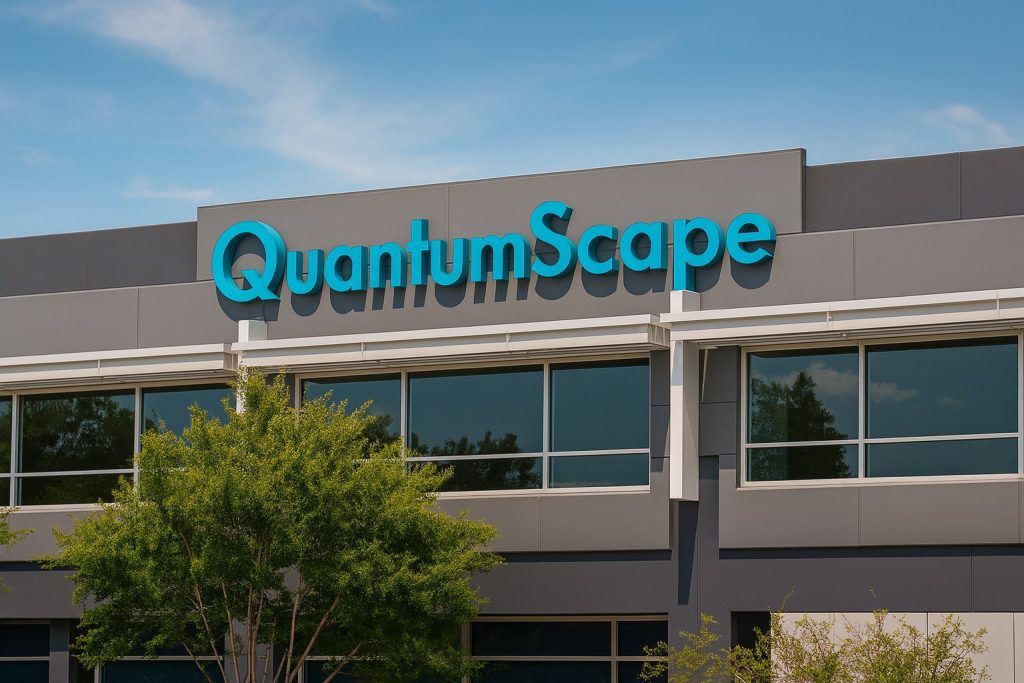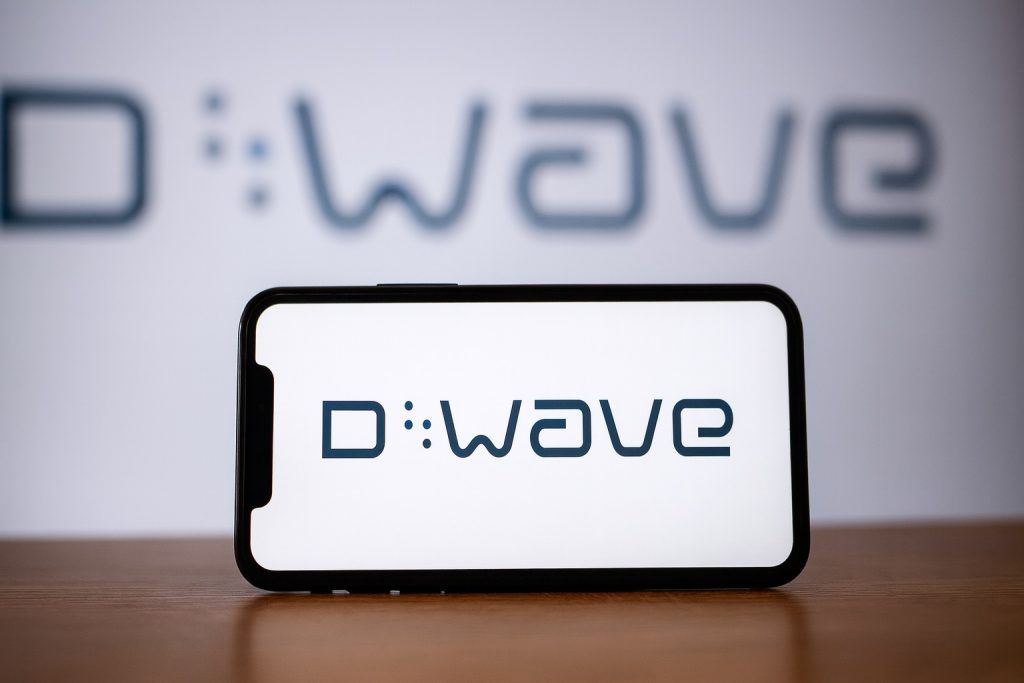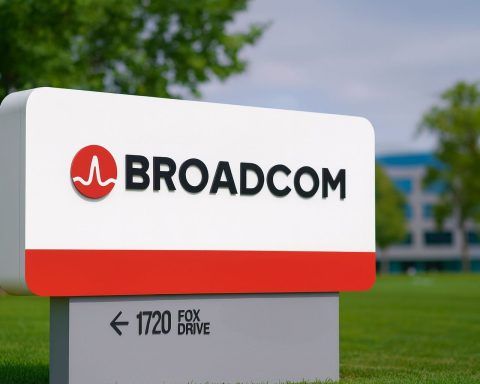- Growth Forecasts Doubled: Dell Technologies has sharply raised its long-term outlook, now targeting 7–9% annual revenue growth (up from 3–4%) and 15%+ annual profit (EPS) growth (up from ~8%) over the next four years [1] [2]. Executives credit “insatiable” demand for servers that power artificial intelligence (AI) workloads as the catalyst [3].
- Generative AI Driving Demand: Dell’s Infrastructure Solutions Group (ISG) – which sells servers, storage and networking – is booming thanks to the AI surge. In its latest quarter, Dell’s ISG revenue jumped 44% year-on-year to $16.8 billion, helping total quarterly revenue hit a record $29.8 billion (up 19% YoY) [4] [5]. The company shipped $8.2 billion worth of AI-optimized servers and booked $5.6 billion in new orders in just one quarter [6], prompting Dell to boost its full-year AI server sales forecast to $20 billion (from $15 billion) [7] [8].
- Big Customers & Partners: Dell counts high-profile AI players among its customers – Elon Musk’s startup xAI and cloud provider CoreWeave are buying Dell’s Nvidia-powered servers [9]. (Musk’s xAI is reportedly raising $20 billion mainly to purchase Nvidia chips [10], underscoring the tremendous AI hardware investments benefiting suppliers like Dell.) Analysts say Dell’s scale gives it a “volume advantage” in this booming market, with an established supply chain and big-client relationships that smaller rivals can’t easily match [11].
- Stock Soars on News: Investors cheered Dell’s AI-fueled optimism. Dell’s stock jumped about 6–7% after the forecast hike, reaching multi-year highs [12]. The shares have gained roughly 17% year-to-date amid the AI server boom [13]. Wall Street analysts are upbeat: Bank of America reiterated a “Buy” rating and raised its price target to $170 ahead of Dell’s announcement [14]. BofA’s Wamsi Mohan projected Dell’s AI initiatives could add $65 billion in sales over five years, driving ~12% annual revenue growth – and he called even that outlook “conservative” given the momentum [15].
- Caution from Michael Dell: Even as he trumpets surging demand, CEO Michael Dell is mindful of eventual saturation. He noted that current need for AI computing power is “tremendous,” but warned that “at some point there’ll be too many” AI data centers – though “not yet”, implying the inflection point lies in the future [16]. For now, Dell emphasizes that we’re still in the early stages of AI adoption, suggesting plenty of runway before any glut [17].
- Focus Shift Away from PCs: Dell’s growth strategy is now firmly centered on data-center infrastructure over personal computers. It expects its enterprise infrastructure segment to grow 11–14% annually long-term, far outpacing the modest 2–3% growth forecast for its PC division [18]. Dell has struggled in the consumer PC market recently, but sees a potential uptick as enterprises refresh aging PCs with AI-capable models (e.g. new Windows 11 systems) later this decade [19]. Still, the company’s future bets are clearly placed on the AI/cloud hardware trend rather than a PC rebound.
- Shareholder Returns & Outlook: Reflecting confidence in sustained cash flow, Dell is doubling its stock buyback program (adding $5 billion authorisation) and plans to raise its dividend ~10% annually through FY2028 [20]. Despite the stock’s rally, Dell’s valuation remains relatively modest (under 1× forward sales [21]), suggesting room for upside if AI-driven growth materializes. The company aims to balance aggressive investment in AI infrastructure with returns to shareholders, positioning itself as a long-term “AI picks-and-shovels” winner in the tech landscape.
Dell Bets Big on AI – Doubling Growth Targets
Dell’s announcement on October 7, 2025 marked a turning point for the company’s trajectory. At an analyst meeting that day, the tech giant dramatically raised its long-term financial forecasts, effectively doubling the pace at which it expects to expand in coming years [22]. Management now projects high-single-digit percentage revenue growth (7–9% annually) and at least mid-teens earnings growth through 2029 [23] [24] – a remarkable upgrade from the prior “GDP-plus” style targets (~3–4% revenue and ~8% EPS growth). The bold new goals signal far greater confidence in future demand, driven almost entirely by the explosive appetite for AI-related hardware.
What’s behind this bullish outlook? In a word: AI. “Customers are hungry for AI and the compute, storage and networking we provide to deploy intelligence at scale,” CEO Michael Dell explained [25]. In other words, organizations across industries are racing to deploy generative AI, large language models like ChatGPT, and advanced analytics – and they need powerful servers and cloud infrastructure to do it. Dell is a leading supplier of that gear, and the company says booming orders for AI infrastructure gave it the confidence to hike its long-term growth bets. Just a year or two ago, such aggressive targets might have seemed far-fetched for Dell (long seen as a mature PC-centric firm), but the AI revolution has rejuvenated its business prospects.
Notably, Dell timed its forecast update to capitalize on this momentum. The company’s Analyst Day was deliberately used to showcase long-term opportunities in AI. By substantially raising guidance, Dell sent a clear message: it believes the current AI boom is not a transient fad, but rather the start of a sustained secular trend that will drive its growth for years. So far, investors are buying in – literally. Dell’s stock price surged as the revised outlook hit the wires, jumping nearly 7% in pre-market trading on Oct. 7 and opening at its highest level in years [26]. This strong market reaction, alongside a flurry of analyst upgrades, underscores how swiftly sentiment around Dell has shifted from cautious optimism to genuine excitement about its role in the AI age [27].
AI Servers: The Game-Changer Driving Dell’s Boom
The foundation of Dell’s renewed optimism is the surging demand for AI servers and data-center hardware. Training advanced AI models (like OpenAI’s GPT-4) and running AI-powered services requires massive computing power – specifically, racks of GPUs and high-performance servers. Dell, as one of the world’s largest server makers, is reaping the rewards of this trend in real time.
Recent numbers underscore just how dramatic the growth has been. In its fiscal Q2 2026 (May–July 2025 quarter), Dell’s infrastructure division achieved record results: ISG revenue climbed 44% year-over-year to $16.8 billion, driving total quarterly sales to $29.8 billion (up 19% YoY) [28]. For context, more than a quarter of Dell’s entire quarterly revenue now comes from AI-focused products. In that single quarter, Dell shipped about $8.2 billion worth of AI-optimized servers and logged another $5.6 billion in new AI hardware orders to be delivered soon [29]. Just a year prior, AI-related sales were only a small fraction of that, highlighting how fast this wave is building.
Buoyed by such momentum, Dell in August boosted its full-year forecast for AI server sales to $20 billion (from $15 billion) [30]. To put that in perspective, Dell expects roughly one-fifth of its total revenue this year will come from AI-driven infrastructure. This is a striking shift for a company that historically got a large chunk of revenue from PCs. It’s also a testament to Dell’s successful pivot toward what CEO Michael Dell calls “the AI opportunity of a generation.” He emphasizes that despite two years of progress, we are still in the “early stages” of AI adoption, implying that demand could continue rising as more enterprises deploy AI [31].
Dell has also secured key wins that position it at the heart of the AI boom. For example, Elon Musk’s AI startup xAI and cloud GPU provider CoreWeave are among Dell’s customers for high-end servers [32]. These firms are emblematic of the new AI gold rush: Musk’s xAI reportedly plans to spend billions on Nvidia chips and infrastructure [33], and CoreWeave (backed by firms like Microsoft) is expanding fast to offer AI cloud services. That Dell is supplying such players underscores its critical role as a distributor of Nvidia-powered AI systems [34]. In fact, Dell’s success is tightly intertwined with Nvidia’s – the world’s leading AI chip maker – since Dell integrates Nvidia GPUs into many of its server offerings. As long as Nvidia’s chips remain the de facto standard for AI, Dell stands to benefit as a primary channel delivering those chips to the data center market.
Importantly, Dell isn’t the only beneficiary of this trend – it’s just one of the biggest. Industry-wide, the AI infrastructure boom is lifting many boats. Rival server makers like Hewlett Packard Enterprise (HPE) have also reported surging orders for AI gear, and specialized player Super Micro Computer – an American firm focused on AI servers – nearly tripled its annual revenue in two years (hitting $22 billion in FY2025, up from $7 billion in 2023) amid the scramble to build AI data centers [35]. This wider context shows how unprecedented the demand spike is. “Insatiable” is how Reuters described the enterprise hunger for AI-capable hardware [36]. While that bonanza has created stiff competition (and some margin pressure from the costly components), Dell’s massive scale is a key advantage. “Dell has a volume advantage due to its scale, established supply chain, and relationships with major buyers, compared to rivals like Super Micro,” notes eMarketer analyst Jacob Bourne [37]. In other words, Dell can source components and fulfill big orders more efficiently than smaller competitors, helping it win large contracts and potentially weather any price wars in the server market.
Investors Cheer – and Analysts See More Upside
Wall Street’s reaction to Dell’s AI-centric push has been emphatically positive. The company’s share price was already on an uptrend in 2025, but the latest guidance upgrade sent it soaring to new heights. On October 7, Dell’s stock jumped about 6–7% as news of the doubled forecasts spread [38]. By Oct 8, the stock traded around $155–160, near its highest level ever, and up roughly 65% from a year earlier (Dell traded in the $90s last fall). This rally comes amid a broader surge in tech stocks tied to AI, but Dell’s gains have outpaced many peers as investors reposition it not just as a PC maker but as an AI infrastructure leader.
Analysts, for their part, are raising estimates and price targets in the wake of Dell’s upbeat outlook. Bank of America’s team applauded the company’s execution in AI servers and boosted their price target to $170 (from the ~$140s previously) [39]. Citi and JPMorgan also reportedly upped targets, impressed by Dell’s ability to capitalize on the AI trend [40]. Perhaps the most bullish commentary came from BofA analyst Wamsi Mohan, who argued that Dell’s new projections might actually be underselling its potential. He estimated Dell’s AI-related businesses could add $65 billion in cumulative revenue over the next five years, which would equate to roughly 12% annual growth – and he called that forecast “conservative” given how strong orders have been [41]. In his view, Dell might surpass even the raised targets if AI demand continues on its current trajectory.
There are also tangible moves underpinning this optimism. Dell’s management is backing up the growth story with shareholder-friendly actions: the company announced it will increase its dividend by ~10% per year through at least 2028 and expand share buybacks by $5 billion [42]. Such steps signal that Dell expects robust cash flows from its AI-driven businesses in the years ahead, enough to invest in R&D and capacity while consistently returning cash to investors. It’s a balancing act of growth and value that Wall Street typically rewards.
Despite the stock’s big climb, some analysts note that Dell’s valuation still looks reasonable relative to tech peers. Even after the rally, Dell trades at under 1× forward annual sales [43] and around 15–20× earnings – a far cry from the lofty multiples of many cloud or chip companies riding the AI wave. “Dell shares are cheap,” one analyst remarked, given the earnings growth on deck [44]. The implication: if Dell truly can achieve mid-teens profit growth consistently, there may be further upside for the stock before it approaches “full” valuation. Of course, much depends on the company meeting (or beating) these ambitious goals in coming quarters.
Michael Dell’s Take: Booming Demand, But No Room for Complacency
Amid the euphoria, Dell’s founder and CEO Michael Dell has offered a nuanced perspective. In public comments around the analyst meeting, he struck a balance between enthusiasm and caution. On one hand, he has been evangelizing the immense opportunity presented by AI. Demand for AI computing power is “tremendous,” Dell said this week [45], emphasizing that companies everywhere are seeking to modernize their IT for the AI era. He also noted that Dell’s customers are “hungry” for the kind of hardware needed to deploy intelligent systems at scale [46] – a trend he believes is still in its early innings.
On the other hand, Michael Dell is seasoned enough to know that every tech boom eventually faces constraints. In an interview with CNBC, he offered a word of warning: “At some point there’ll be too many [AI] data centers,” he said, though “not yet” [47]. In essence, he anticipates that the industry could eventually overbuild AI infrastructure – similar to how past tech manias (from dot-com data centers to crypto mining rigs) led to gluts when supply overshot demand. For now, though, he does not see that point on the immediate horizon, given how far we likely are from AI saturation. By voicing this, Dell seems intent on keeping expectations realistic even as his company races to fulfill orders. It’s a reminder that while the current demand feels limitless, planning for the long term requires acknowledging that growth will normalize one day.
This candid note of caution aligns with some broader market commentary. In fact, a few high-profile voices have recently warned about “AI bubble” concerns in tech – for example, the Bank of England pointed to the risk of a sudden correction in AI-inflated stock valuations [48]. However, most industry insiders, Michael Dell included, argue that we are nowhere near a speculative bubble in the infrastructure side of AI. The demand for computation is very real, and most AI data centers being built now are quickly put to use training models or serving AI applications – not lying idle. Dell’s comment simply acknowledges that the build-out won’t grow at breakneck speed forever. In the meantime, his company intends to capture as much of the opportunity as possible, while being vigilant for signs of oversupply down the road.
Outlook: Boom, Competition, and the Road Ahead
Looking forward, Dell Technologies faces an exciting yet challenging road. The opportunity in AI infrastructure is immense – research firms project the AI hardware and services market will reach $350 billion by 2028 [49], several times larger than today. Dell clearly wants a significant slice of that pie. Its raised guidance through 2029 suggests management believes the current boom will translate into a new baseline of higher growth for Dell, not just a one-off spike. If they’re right, Dell could evolve from a low-growth hardware provider into a strategic “arms dealer” of the AI age, supplying the picks and shovels (high-end servers, storage, networking) that power the machine learning gold rush.
To seize this future, Dell will need to execute on multiple fronts. First, it must stay at the cutting edge of AI technology – integrating the latest chips (like Nvidia’s GPUs and potentially alternatives from AMD or others), offering energy-efficient designs (liquid cooling, etc.), and providing the software and services around its hardware that enterprise customers require. Thus far, Dell has partnered effectively with Nvidia and even with startups (for instance, it collaborates with venture-backed chip firms to evaluate new AI accelerators). Continuing this agility will be key, as the AI hardware landscape can evolve quickly.
Second, Dell faces stiff competition and will have to defend its turf. Competitors include not just traditional rivals like HPE, but also the cloud giants (Amazon, Google, Microsoft) that sometimes design their own servers or buy from multiple sources, and specialist firms like Supermicro that cater specifically to AI needs. Dell’s advantage, as noted, is its sheer scale and end-to-end supply chain integration [50]. It can offer corporate buyers a full stack of products (from edge devices to data center gear to financing and support services) which many competitors cannot. Leveraging that one-stop-shop appeal could help Dell maintain its edge even as others flood into the lucrative AI server market.
Third, the company must be mindful of economic cycles and costs. Building AI systems is expensive – for both vendors and customers. Dell has to invest in inventory (GPUs and components), expand production capacity, and potentially absorb longer sales cycles for large deals. There’s also the risk that global economic softness or high interest rates could make businesses more cautious in spending on new AI infrastructure. If there’s a macro downturn or if AI projects don’t deliver expected ROI, orders could slow. Dell’s PC business, meanwhile, remains a drag in the short term (consumer PC sales fell 19% earlier this year [51]) – though an upcoming upgrade cycle (with Windows 10 support ending in 2025) might stabilize that segment. The company’s challenge will be to ride the AI wave without overextending, ensuring it can scale back if needed.
So far, the signals remain very positive. Dell’s backlog for AI products is large and growing, indicating strong forward demand [52]. And crucially, the nature of this demand is more diversified than past tech booms – it’s coming from cloud providers, telecom companies, banks, startups, research labs, and more, all at once. This broad base suggests the AI trend is more than just hype; it reflects an architectural shift in computing across the economy. In that context, Dell’s transformation into an AI infrastructure leader could have lasting legs.
Bottom Line: Dell Technologies is riding a profound technology wave that has reset its growth trajectory. By doubling down on AI servers and data-center solutions, the company has doubled its growth forecasts – and seen its stock and investor sentiment soar in tandem [53] [54]. There is a palpable sense of a new chapter for Dell, one in which it plays a central role in enabling the AI revolution. Of course, no boom comes without risks: competition is fierce, and even Michael Dell acknowledges that today’s “tremendous” demand will eventually plateau [55]. But for now, Dell is firmly in “build mode,” expanding its capacity and capabilities to meet the ravenous appetite for AI computing power. If the AI age continues to unfold as expected, Dell’s big bet could pay off handsomely – solidifying its place among the top tech winners of the decade, even as it keeps one eye on the horizon for signs of too much of a good thing.
Sources:
- Reuters – Dell raises growth targets on strong AI server demand [56] [57] [58]
- The Information – Dell Doubles Long-Term Revenue Growth Forecast [59]
- CNBC – Michael Dell: “At some point there’ll be too many AI data centers” [60]
- Tech Space 2.0 (ts2.tech) – Dell’s AI Boom Doubles Growth Forecasts – Stock Soars as Investors Cheer [61] [62]
- Tech Space 2.0 – AI Surges, Cyber Hacks & Rocket Launches (Oct 7–8, 2025) [63]
- Tech Space 2.0 – Super Micro (SUPX) 2025: Can the AI-Server Pure-Play Keep Its Edge? [64]
References
1. www.reuters.com, 2. ts2.tech, 3. www.reuters.com, 4. ts2.tech, 5. www.nasdaq.com, 6. ts2.tech, 7. www.reuters.com, 8. ts2.tech, 9. www.reuters.com, 10. ts2.tech, 11. www.reuters.com, 12. ts2.tech, 13. ts2.tech, 14. ts2.tech, 15. ts2.tech, 16. eng.pressbee.net, 17. www.reuters.com, 18. www.reuters.com, 19. ts2.tech, 20. ts2.tech, 21. ts2.tech, 22. ts2.tech, 23. www.reuters.com, 24. ts2.tech, 25. www.reuters.com, 26. ts2.tech, 27. ts2.tech, 28. ts2.tech, 29. ts2.tech, 30. www.reuters.com, 31. www.reuters.com, 32. www.reuters.com, 33. ts2.tech, 34. www.theinformation.com, 35. ts2.tech, 36. www.reuters.com, 37. www.reuters.com, 38. ts2.tech, 39. ts2.tech, 40. stocktwits.com, 41. ts2.tech, 42. ts2.tech, 43. ts2.tech, 44. ts2.tech, 45. eng.pressbee.net, 46. www.reuters.com, 47. eng.pressbee.net, 48. ts2.tech, 49. ts2.tech, 50. www.reuters.com, 51. ts2.tech, 52. ts2.tech, 53. www.reuters.com, 54. ts2.tech, 55. eng.pressbee.net, 56. www.reuters.com, 57. www.reuters.com, 58. www.reuters.com, 59. www.theinformation.com, 60. eng.pressbee.net, 61. ts2.tech, 62. ts2.tech, 63. ts2.tech, 64. ts2.tech
